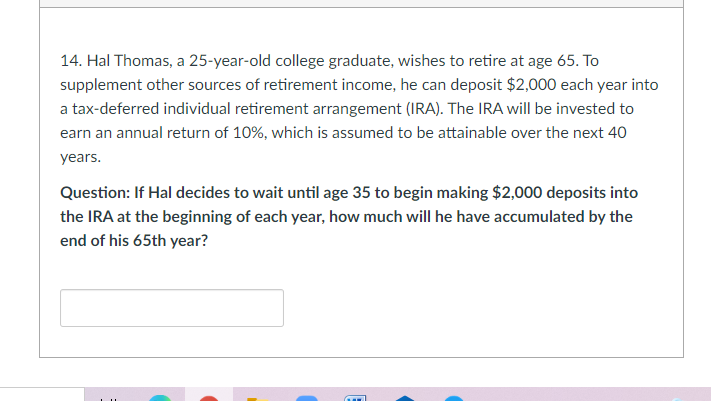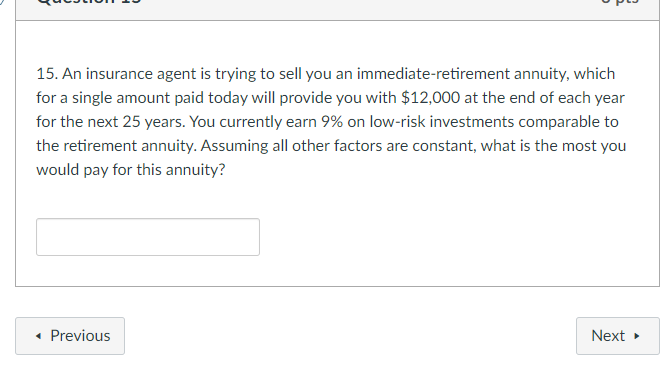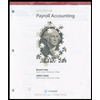14. Hal Thomas, a 25-year-old college graduate, wishes to retire at age 65. To supplement other sources of retirement income, he can deposit $2,000 each year into a tax-deferred individual retirement arrangement (IRA). The IRA will be invested to earn an annual return of 10%, which is assumed to be attainable over the next 40 years. Question: If Hal decides to wait until age 35 to begin making $2,000 deposits into the IRA at the beginning of each year, how much will he have accumulated by the end of his 65th year?
14. Hal Thomas, a 25-year-old college graduate, wishes to retire at age 65. To supplement other sources of retirement income, he can deposit $2,000 each year into a tax-deferred individual retirement arrangement (IRA). The IRA will be invested to earn an annual return of 10%, which is assumed to be attainable over the next 40 years. Question: If Hal decides to wait until age 35 to begin making $2,000 deposits into the IRA at the beginning of each year, how much will he have accumulated by the end of his 65th year?
Chapter15: Choice Of Business Entity—other Considerations
Section: Chapter Questions
Problem 94TPC
Related questions
Question
SHOW SOLUTIONS IF NEEDED THANK U

Transcribed Image Text:14. Hal Thomas, a 25-year-old college graduate, wishes to retire at age 65. To
supplement other sources of retirement income, he can deposit $2,000 each year into
a tax-deferred individual retirement arrangement (IRA). The IRA will be invested to
earn an annual return of 10%, which is assumed to be attainable over the next 40
years.
Question: If Hal decides to wait until age 35 to begin making $2,000 deposits into
the IRA at the beginning of each year, how much will he have accumulated by the
end of his 65th year?

Transcribed Image Text:15. An insurance agent is trying to sell you an immediate-retirement annuity, which
for a single amount paid today will provide you with $12,000 at the end of each year
for the next 25 years. You currently earn 9% on low-risk investments comparable to
the retirement annuity. Assuming all other factors are constant, what is the most you
would pay for this annuity?
• Previous
Next
Expert Solution
This question has been solved!
Explore an expertly crafted, step-by-step solution for a thorough understanding of key concepts.
This is a popular solution!
Trending now
This is a popular solution!
Step by step
Solved in 3 steps

Knowledge Booster
Learn more about
Need a deep-dive on the concept behind this application? Look no further. Learn more about this topic, finance and related others by exploring similar questions and additional content below.Recommended textbooks for you


EBK CONTEMPORARY FINANCIAL MANAGEMENT
Finance
ISBN:
9781337514835
Author:
MOYER
Publisher:
CENGAGE LEARNING - CONSIGNMENT



EBK CONTEMPORARY FINANCIAL MANAGEMENT
Finance
ISBN:
9781337514835
Author:
MOYER
Publisher:
CENGAGE LEARNING - CONSIGNMENT



